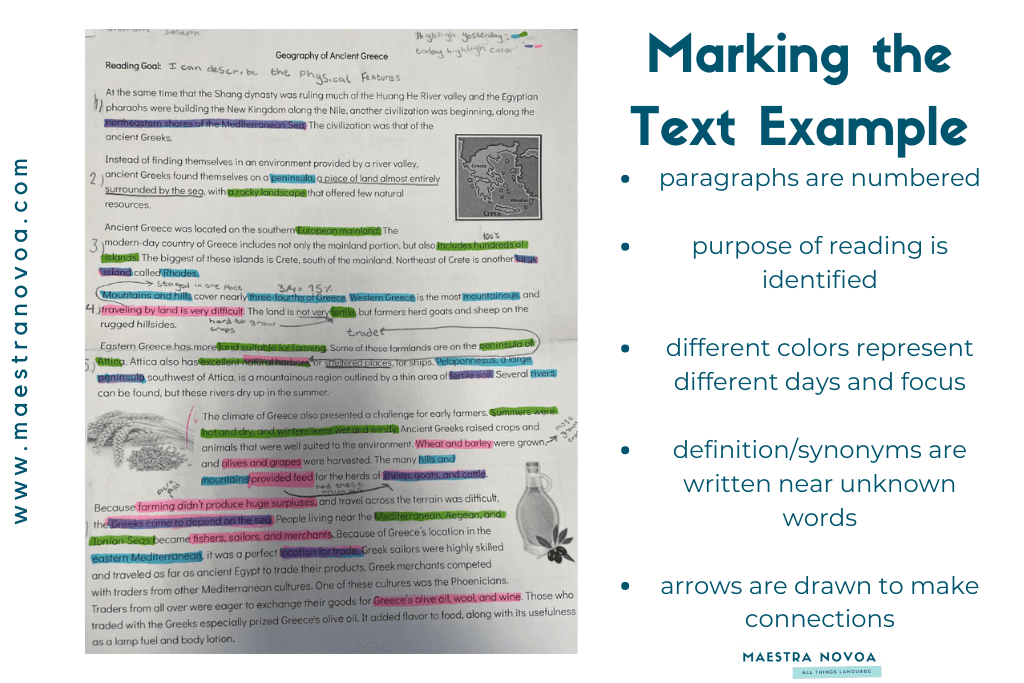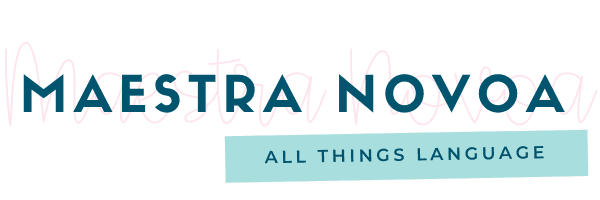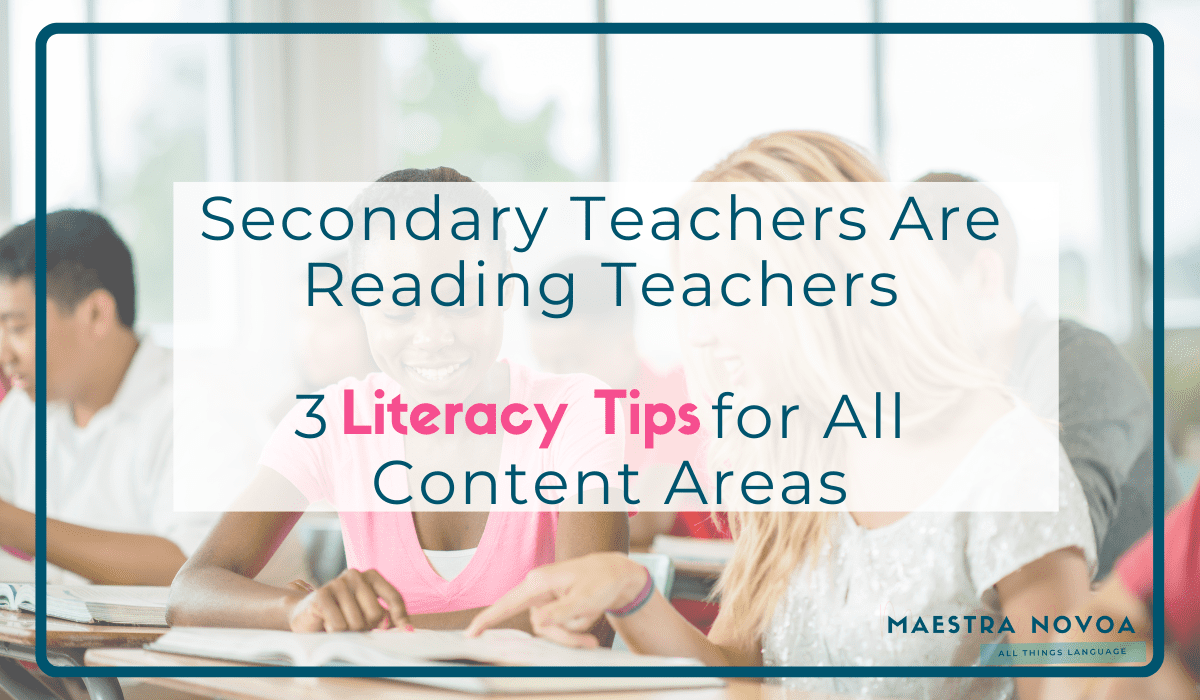Secondary teachers are reading teachers no matter what content area they teach! There. I said it. I also want to shout it from the top of a mountain. Let me explain why I believe this so fiercely and provide you with three easy literacy tips to use in all content areas. *Disclaimer: I will probably use a lot of exclamation marks.

Reading is a fundamental skill that is required for success in all subject areas. As students progress through their academic careers, the expectations for reading and comprehension increase significantly. Teachers at the secondary level are often responsible for teaching subject-specific content to students who may struggle with reading and writing. Reading and writing are often left to only the English teacher, but they shouldn’t be. Freeman and Freeman said, “Even though the school may not refer to these teachers [classroom and content teachers] as language teachers, that is what they are.”
It is important for all secondary teachers to have a strong understanding of how to teach reading skills and how to implement effective literacy strategies within their content area instruction. Now, I understand that the belief that teachers should only teach their content is really engraved systematically. I don’t expect this post to change the entire school system, although that’d be pretty cool. I am here to share why we should slowly start erasing that belief and give you a few simple literacy strategies to use and share in your building.
Teaching with Text Checklist
I wanted to share this checklist with you before we go any further. It covers all the important components to review when using texts to teach. No worries, the checklist is free! It will guide you through your planning and ensure you are maximizing the text you’re using. This checklist is meant for any content area at any grade level. I included what I did based on my experience of teaching ELL students. These are vital components to lesson planning even when I don’t use text.
3 Literacy Strategies for All Content Areas
The literacy tips for all content areas I am sharing are designed to help students understand key concepts, as well as ensuring that students are able to read and comprehend complex texts across subject areas. Here are three ways you can incorporate reading into your secondary lessons:
Literacy tip #1: Use Literature Circles with Articles
Divide your class into small groups and assign them an article read together. Each group member can take on a specific role such as discussion director or summarizer. In their groups, they will discuss the article and their thoughts on it. This will not only improve their reading comprehension and analysis skills but will also encourage them to think critically and communicate effectively.
You can do this a couple of different ways in content classes that aren’t ELA. One way is by doing leveled groups, such as providing a mild, medium, and spicy level. Check out this blog post for free resources for leveled texts.
Here are some ideas for certain content areas.
History: different perspectives of an event, different events of a period, or types of systems (then students can switch to a different system the following day/week)
Science: jobs that use the concept of the unit, the latest scientific discoveries related to your content, or STEM celebration days. This site has a great calendar list.
Math: different ways to solve a problem (such as systems of equations), certain concepts, or celebrations of certain math concepts. This blog post has a list of celebration days in math. This article is perfect for pi days because it is leveled plus available in Spanish.
Literacy tip #2: Analyze Texts in Class
Choose a complex text related to your lesson and go through it together as a class. Read it aloud and highlight important points, vocabulary, and themes. What I love about this is that it helps students learn how to mark up the text and your expectations of reading from them.
Students can then work in pairs or small groups to continue to annotate the text and ask questions. This process will help them develop close reading skills and learn how to extract meaning from difficult passages.

In need of guidance on how to annotate and mark the text? AVID is a great resource for this! AVID is a schoolwide college and career readiness system Here is an in-depth explanation of marking the text.
Literacy tip #3: Use Reading Strategies
Teach your students specific reading strategies such as predicting, visualizing, questioning, summarizing, and clarifying. Encourage them to use these strategies when they read independently and when they encounter challenging texts. You could also have them keep a reading log or journal to reflect on their learning and progress.
Sound too elementary? It shouldn’t! These are strategies students will continue (consciously or not) into adulthood.
Take Literacy to the Next Level
Do you feel like you’re ready to take it to the next level or want more literacy strategies? Check out this blog post covering reading strategies for comprehension. The strategies are gamified and super engaging. My students always ask when we are going to play again. Another great way to make literacy part of any content area is creating a culture of writing. This blog post has some great ideas on how to create that culture.
Also, here is a reminder to download the Teaching with Text checklist! It will help guide you as you plan to use these strategies in your classroom. It covers all the important components to review when using texts to teach. It is meant for any content area at any grade level.
Recap about Content Secondary Teachers being Reading Teachers
By incorporating these strategies, you can help your students become more confident readers and better able to handle the demands of secondary school and beyond. I hope these three literacy strategies are helpful because they’re not too overwhelming. Comment on this post or reach out via email if you need a planning buddy or someone to brainstorm your lesson with. Remember, all content secondary teachers are reading teachers and these literacy tips for all content areas should be of great help!


